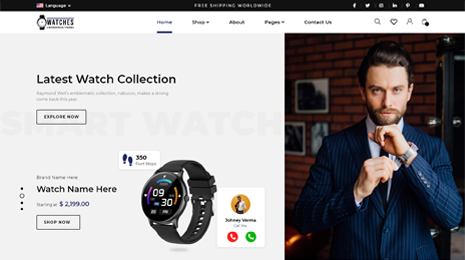Having a business that serves a diverse group of people belonging to different parts of the world needs to have a multilingual site in order to succeed. This is also true for educational institutions and universities that have students across the globe. In this blog, we will see how to create a multilingual website WordPress.

How To Achieve A Multilingual Website In WordPress?
There are plenty of plugins available that will help you create a multilingual site in WP. With WPML, things become a lot easier. This WPML plugin is a translation plugin that helps you to translate your site.
Making a Multilingual Website In WordPress Using WPML Plugin
Though WPML will help in translating your website, you first need to build a website in a single language. You will be requiring a domain name (which is your online site’s address) and hosting service (hosting server is a space where all your website files are stored) for creating a website.
Once you are done creating your site in the language you have chosen, you can later add the different language translations to your website. Here is how you can do it with WPML.
Step 1: Installing WPML And Setting Up Multilingual Options
Install and activate the WPML plugin on the WP site you have created. Upon the successful activation, you can see a notification box placed at the top of your WP dashboard along with a Configure WPML button. To start the configuration, you need to click that button.
After this, the WPML setup wizard will appear.
In the first step itself, WPML will be able to automatically detect the primary language of your WP site. You can change it if you want or in case if it is wrongly detected.
To continue, click on the Next button.
Next, you will be asked to select the languages that you want to enable for your website. so, select the languages and click Next.
In the third step of the WPML setup process, you will be able to see the language switcher option. This language switcher allows your website users to choose to view your website’s content in any language they prefer. This normally appears in a drop-down list form or a collection of flags on your website.
From there, the order of languages can be arranged by you simply by dragging and dropping.
Under that, you will see the options to add a language switcher to your site. This language switcher can be added to your site’s navigation menu, or footer, or widget area. You may also add links to the translation of posts after or before each content.
If you want to add a language switcher to the navigation menu, you need to click the Add a new language switcher to a menu button in the Menu Language switcher section.
Once you do that, in the pop-up box, New Menu Language Switcher options will appear.
You can show the language switcher by selecting the menu on your site. Also, you will be able to set the language switcher position in the menu. You can either show it as the first menu item or the last menu item.
Later, you can also select what you want to include in the language switcher menu item. You simply need to check the boxes to select what to show. At last. You can also set the colors of the language switcher. And while you configure, you can see all the changes on the preview-box. When you are done, click on Save.
In a similar manner, you will be able to add language switcher to other different locations as well. For adding the language switcher only to the navigation menu, click on the Next button.
In the final setup step, you need to enter your site key and this key can be obtained for your WPML account. Copy and paste the key in the box and click on the Register button. This is how the configuration gets completed.
Step 2: Adding Multilingual Content In WP Posts As Well As Pages
For creating a translation for your existing WP posts, navigate to Posts > All Posts. You will see all your posts and the number of posts per language. You will have to click on the Add button under a language for translating the post. After this, you will see the flag/ language name on top of the editor. You will be able to see the Language meta box on the right side of the post editor.
You will be able to add the translated content in the post area and publish it. Also, you may also use the WPML Translation Management Module and manage translators.
Step 3: Translations For Categories And Tags
In order to translate your WP categories, tags, and any other custom taxonomies into any language you wish, from your dashboard, you have to go to WPML > Taxonomy Translation.
In the next step, you have to select the taxonomy you wish to translate. If you select Categories, it will load all the categories and there you will see Add buttons right next to the taxonomy terms.
Just click on the Add button under a flag/language for translating your taxonomy.
Step 4: Translations For Navigation Menus
To translate navigation menus, go to Appearance > Menus from your WP dashboard. Select the menu you want to translate. You will be able to see Add translation buttons. Just click on the button for translating the menu. Once you translate the menu, you then need to add those same menu items to your primary language menu.
If your menu items have pages, posts, and categories, you first have to translate them by following step 2. Later, you can add them from the tabs in the Edit Menu panel. If you are done, click the Save Menu button.
Step 5: Translation Of Themes, Plugins, And Other Text
For translating your plugins and WordPress themes, from your WP dashboard, you need to navigate to WPML > Themes and plugins localization.
The default will make you see Don’t Use String Translation to translate the theme and plugins checked and a checkbox just below that. If there are any translation files available on your theme, you can check the box. but this only works with the official WordPress.org themes.
WPML lets you properly translate your creative WordPress themes and plugins with a WPML String Translation Module. With this module, you will be able to translate custom fields, widgets, and other text.
Hope this blog was helpful for you in learning how to create a Multilingual website WordPress with ease using WPML.












